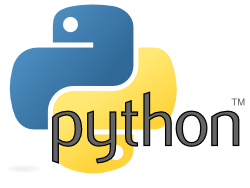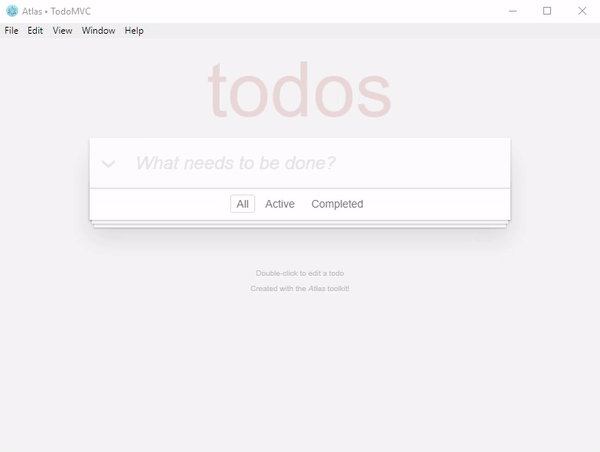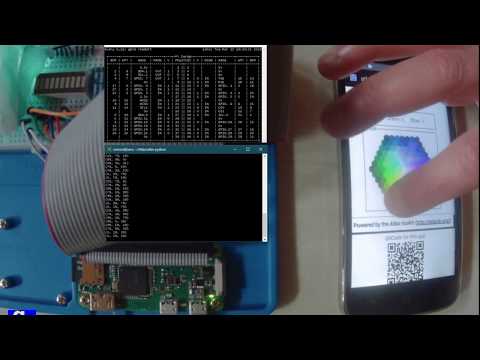A fast and easy way to add a graphical user interface (GUI) to your programs.
Project description
Python version of the Atlas toolkit
NOTA: this toolkit is also available for:
- Java: http://github.com/epeios-q37/atlas-java
- Node.js: http://github.com/epeios-q37/atlas-node
- Perl: http://github.com/epeios-q37/atlas-perl
- Ruby: http://github.com/epeios-q37/atlas-ruby
If you are looking for the WebGPIO application, an application with which you can control the Raspberry Pi (or other similar devices) GPIO with your smartphone, you will find it at the bottom of this page, in the Raspberry Pi/ODROID-C2 section.
With the Atlas toolkit, it has never been easier to create your own modern web application (SPA):
- no Javascript to write; only HTML and Python,
- no front and back end architecture to bother with,
- no web server (Apache, Nginx…) to install,
and all this only with the help of a library of about 20 KB.
With the Atlas toolkit, your applications will be accessible from the entire internet on laptops, smartphones, tablets…, and this without having to deploy them on a remote server or to open an incoming port on your internet box. All you need is a local computer with a simple internet connection.
The Atlas toolkit is also the fastest and easiest way to add a graphical user interface to all your programs.
If you want to use the Atlas toolkit without installing the examples, simply install the atlastk package from PyPI (pip install atlastk). This package has no dependencies.
The Atlas toolkit can also be used for educational purposes, to write modern programming exercises, i.e. with a true graphical interface instead of the usual outdated textual one. More about this can be found here.
There is also a stub to for this library at address https://q37.info/s/zzcn3wnx.
Live demonstrations
Before diving into source code, you can take a look on some live demonstrations to see how applications based on the Atlas toolkit look like. You will find some games, like the 15-puzzle game and the Reversi (aka Othello) game. And you will also find the Atlas toolkit version of the TodoMVC application, which looks like:
To see all this live demonstrations, simply go here, click on the green run button, select the demonstration you want to see, and then click (or scan with your smartphone) the then displayed QR code.
Hello, World!
Here's how the Hello, World! program made with the Atlas toolkit looks like:
This example is part of the live demonstrations above, but you can launch it on your computer:
git clone http://github.com/epeios-q37/atlas-pythoncd atlas-pythonpython Hello/Hello.py
You can also put below source code in a file and launch it after having installed the atlastk package (pip install atlastk), or, with absolutely nothing to install, by pasting and launch the below code here, and then open the displayed URL in a web browser.
Source code:
import atlastk as Atlas
body = """
<div style="display: table; margin: 50px auto auto auto;">
<fieldset>
<input id="input" maxlength="20" placeholder="Enter a name here" type="text"
data-xdh-onevent="Submit" value="World"/>
<div style="display: flex; justify-content: space-around; margin: 5px auto auto auto;">
<button data-xdh-onevent="Submit">Submit</button>
<button data-xdh-onevent="Clear">Clear</button>
</div>
</fieldset>
</div>
"""
def acConnect(dom):
dom.setLayout("", body)
dom.focus("input")
def acSubmit(dom):
dom.alert("Hello, " + dom.getContent("input") + "!")
dom.focus("input")
def acClear(dom):
if ( dom.confirm("Are you sure?") ):
dom.setContent("input", "")
dom.focus("input")
callbacks = {
"": acConnect, # The action label for a new connection is an empty string.
"Submit": acSubmit,
"Clear": acClear,
}
Atlas.launch(callbacks)
Content of the repository
The atlastk directory contains the Python source code of the Atlas toolkit, which is the directory you have to reference in PYTHONPATH in order to use the Atlas toolkit in your own program, unless you have installed the atlastk package with pip install atlastk.
All other directories are examples:
- Blank: very basic example,
- Hello: "Hello, World!",
- Chatroom: multi-user chatroom,
- ReversiTXT: Reversi game with
XandOfor token, - Notes: note taking program,
- TodoMVC: TodoMVC,
- Hangman: Hangman game,
- 15-puzzle: 15-puzzle game,
- ReversiIMG: Reversi game with more evolved graphics,
- ReversiXSL: Reversi game using XSL.
Other exemples are detailed in the next section.
Except for the ErgoJr, GPIO and RGB applications, which are detailed in the next section, to run an example, launch python main.py, and select the example you want to run. You can also launch python <Name>/ (don't forget the final /), where <Name> is the name of the example (Blank, Chatroom…).
The Stars application is an example where the Atlas toolkit is used to control a Pygame based application. Of course, Pygame needs to be installed.
Raspberry Pi/ODROID-C2
If the applications does not work on your Raspberry Pi, please see this issue: https://github.com/epeios-q37/atlas-python/issues/1
The GPIO and RGB applications are designed to be used on a Raspberry Pi or a ODROID-C2.
For the Raspberry Pi, the RPi.GPIO Python module have to be installed (this is probably already the case).
For the ODROID-C2, The Python version of WiringPi must be installed, and the application has to be launched with sudo (sudo python GPIO/ or sudo python RGB/).
The ErgoJr application is experimental and to control a Poppy Ergo Jr robot.
The RGB application is dedicated to the control of a RGB led, and the GPIO (aka WebGPIO) application allows to control the basic pins. Here is a video to see how they works:
Same video on PeerTube : https://peertube.video/videos/watch/e7e02356-c9c3-4590-8ec0-8f8da06ff312
Project details
Release history Release notifications | RSS feed
Download files
Download the file for your platform. If you're not sure which to choose, learn more about installing packages.






















